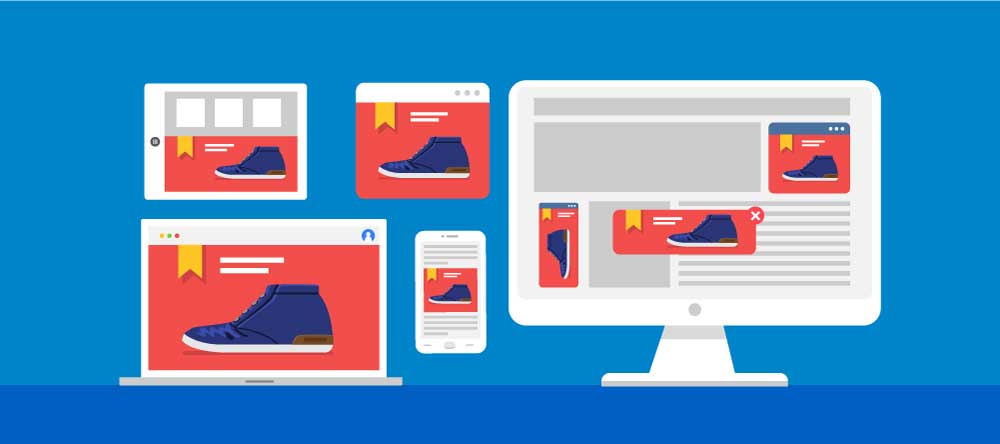When it comes to online marketing, no conversation would be complete without mentioning Google Display ads. After all, Google’s Display ads reach a remarkable amount of online users via the Google Display Network — more than 90 percent of worldwide users.
In fact, Google Ads is the world’s largest search advertising provider, owning more than 60 percent of the market’s share.
For this reason, businesses across all industries and sectors turn to the Google Display Network to publish ads and reach target audiences. But what exactly are Google Display ads, and how does this network work?
For businesses looking to deepen their knowledge of Google Display ads, this in-depth guide will provide insight into the world of Google Ads, as well as a few key takeaways for using this network to better reach any audience.
What are Google Display Ads?
If you have spent any time surfing the web, then you have undoubtedly seen a Google Display ad. These ads are shown to internet users on videos, websites, articles, and more. Using the Google Display Network, which is a collection of more than two million websites, Google can display any business’ ad to a target audience.
For example, if you are searching for a recipe on Allrecipes.com and see an ad for a local special on butter, you are seeing a Google Display ad in action.
The fact that Google can push these ads across millions of websites is precisely why the network is so powerful. These ads make it possible for businesses to reach almost any internet user. And, because they are displayed on a webpage that the user is already visiting, they tend to be more impactful than other ads.

Quick Tip: Google Display Ads Versus Search Ads
In addition to Google Display ads, Google also offers another type of online ad: Google Search ads.
So what is the difference?
Google Search ads show up to customers the moment they type a search query into Google. These are the ads you see displayed when you are still on Google’s search engine and while scrolling through the search results.
Google Display ads, however, show up anywhere on the web. They could be displayed to you as you read a local news article or as you look at a website for local weather.
A Search ad is a great fit for reaching a customer who is actively searching for your product or service.
A Display ad, on the other hand, is good for introducing your business to a specific target audience. This can help you widen your reach when compared to using Search ads alone.
In most cases, businesses will use a combination of both ad types to reach their target audience. However, the content of a Display ad should be different than a targeted Search ad, as the customer is in a different stage of the buying journey.
How Do You Target the Right Audience with Google Display Ads?
Because Google Display ads are not showcased the moment someone is searching for your brand, product, or service, you may wonder how you find the right audience. The answer is through strategic targeting.
Google allows you to display your ad using a few methods:
- Existing customers: One of the easiest ways to use Google Display ads is to target your existing customers. You can essentially follow your customer around the web, displaying ads via the Display Network.
- Similar audiences: By choosing to display your ad to similar audiences, you can have Google help you find new customers who are likely to be interested in your products. These customers share similarities with your existing customers, such as interests or demographics, providing you with a broader reach.
- Retargeting ads: Similar to marketing to existing customers, you can set up your Google Display ad campaign to retarget someone who visited your website or previously engaged with your online storefront. For example, if someone placed a product in the shopping cart but never checked out, you could display ads to that shopper across the web that showcase a discount or serve as a reminder about that product.
- Automated targeting: Google also allows you to find similar high-performing audiences based on your existing audiences and your website’s landing page. Over time, Google will automatically optimize your campaign to reach new customers who might be interested in your products or services.
How Do You Create a Display Ad?
Because display ads are showcased across websites and apps, Google offers a few formats for ad creation.
You can run any of the following types of ads on the Display Network:
- A Responsive Display Ad: Responsive Display Ads are relatively easy to create. Google will have you enter your ad text, add your images and logo, and then Google will optimize the ad to improve your performance. Additionally, Google offers free use of its library of images. The beauty of these ads is that they show up as native ads and blend into the font and feel of the publisher’s website. This makes them feel less out of place when a user lands on a website and sees your ad.
- Uploaded Image Ads: If you want more control over how your business’ ad looks, Google allows you to create and upload your own ad. You can upload ads as images in a variety of sizes or as HTML5. Keep in mind that these ads are static, which can cause them to look out of place on certain websites.
- Video Ads: Google also provides you with the opportunity to use a video ad to display on YouTube and across the Display Network. This can be a powerful tool for influencing purchasing decisions.
- Gmail Ads: At the top of every Gmail inbox is an area where ads are displayed. Google allows you to create an ad for Gmail that will be displayed to members of your audience when they are in their inbox.
Best Practices for Ad Creation
While creating a Display ad is not complex, not all ads are created equally. To ensure that you get the most out of your ad spend, pay attention to the following ad creation best practices:
- Keep your messaging simple. If customers see your ad, they need to understand the key takeaway in a matter of seconds. Don’t clutter your ad with too much copy, but focus on a single message instead.
- Use high-quality images. If you plan to use your own product images, make sure they are high quality. A grainy, low-quality image can degrade the look of your entire ad.
- Test multiple ads. Rather than simply creating one Display ad and calling it good, try testing out a few options. Gather data on the ads you run, and determine which ones are resonating with your audience best.
- When in doubt, seek the help of a professional. If you don’t have a marketing team and you are looking to set up Google Display ads, it can be worthwhile to hire a professional agency to help you create your ad. A poorly designed ad can immediately cheapen your brand. If you don’t have the skills needed to create a high-quality ad, seek the help of a pro.
When Will A Display Ad Show?
Unlike a Google Search ad, which shows up when a customer searches for a specific product or service, you can use Display ads to gain a customer’s attention before they even begin their search.
This is an effective way to reach a target audience and capture their attention earlier in the purchase cycle.
Not only that, but you can also use these ads for retargeting website visitors. In this case, they will see your Display ad after visiting your site and leaving. This allows you to remind them about a product or service or to provide them with an additional incentive to choose your brand.
When your Display ad is showcased will depend on how you set up your campaign and what type of audience targeting you opt to use.
How Do You Measure Your Display Ads Performance?
Through Google Ads, you can measure any Display ad campaigns you are running. Here, you can see:
- What web pages are running your ads
- Which ads are giving you the highest number of clicks
- Which websites are giving you the highest value for the lowest cost
By monitoring this information, you can adjust your Display ad campaigns to increase your reach while lowering your spend. This is an ongoing task, and you should analyze data at least once a week.

Common Terminology for the Google Display Network
As you navigate the Google Display Network, the following are some common terms you might run across and their meanings.
Reach
Reach refers to the number of possible impressions that fit within your targeting settings. For example, if you want to target a similar audience, Google will calculate the number of possible impressions similar audiences will provide.
The more layers you add to your targeting strategy, the more narrow the potential reach of your ad.
The key is to create a target audience that is specific enough to prevent wasteful spend, but broad enough to amplify your reach.
Bidding
Bidding refers to the amount of money you are willing to spend to reach a specific target audience. You can adjust your bidding based on the value of a specific audience, which will, in turn, increase your potential reach.
Optimized targeting
As Google continually gathers more and more data on internet users, its ability to provide insights into audiences is only increasing. With this data, it offers you the ability to use optimized targeting. This automated process explores what customers have the highest likelihood to convert within your campaign goals. Google’s system will essentially optimize your target audience as your campaign progresses.
Start Your Google Display Ad Campaign Today
With the remarkable reach of the Google Display Network, it is worthwhile to tap into the power of Google Display ads for almost any business. These ads allow you to get your brand in front of both existing customers and potential new leads.
The key is to set up your ad campaigns correctly to ensure the best reach for the least spend. At J&L Marketing, we are industry experts in Google Display ad campaigns. We can work with you to determine:
- What types of ads you should be running
- Who your target audience should be
- What you should set your bidding at
Additionally, we will help you create a robust ad strategy that includes both Google Display and Google Search ads. Together, these two ad types can work hand-in-hand to generate more qualified leads than ever.
Interested in learning more? Reach out! We look forward to speaking with you soon and assisting you in navigating the world of Google Display ads.



